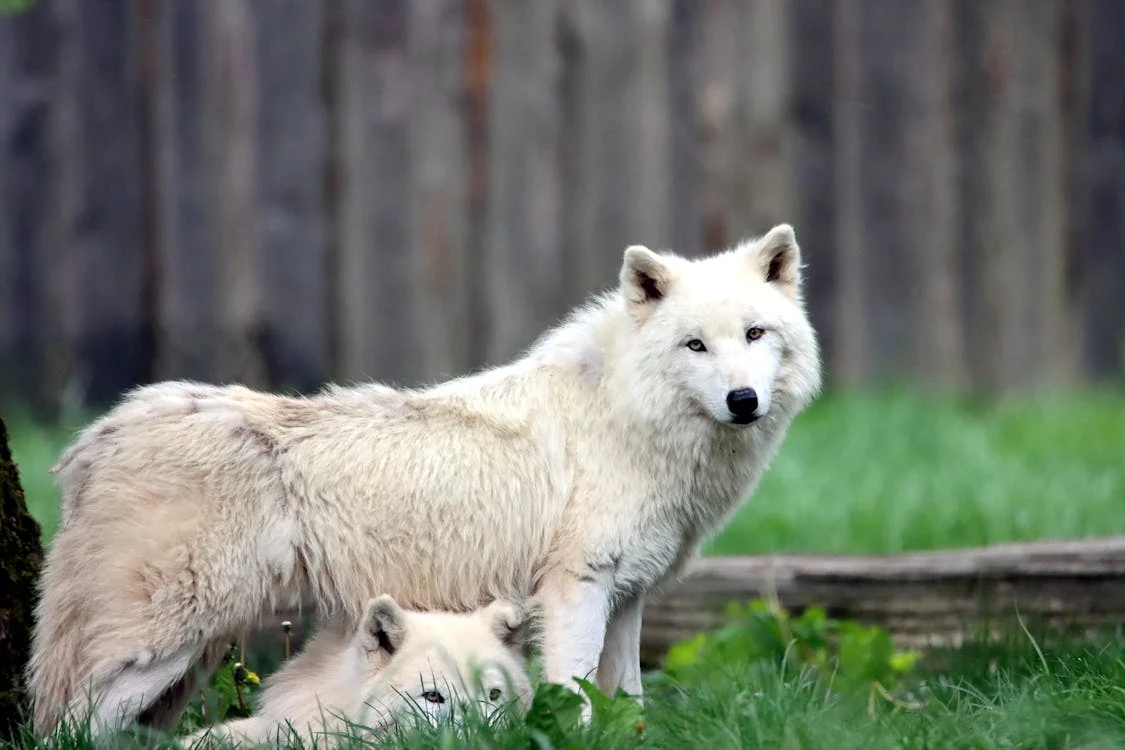Wolves and domestic dogs share a common ancestry, but the differences between them are far more profound than what meets the eye. From their physical traits to behaviors and even cognitive abilities, the contrast between these animals is a fascinating result of evolution, domestication, and human interaction over thousands of years. Here are the key differences between wolves and domestic dogs that you may not know:
1. Evolutionary Divergence
While wolves (Canis lupus) and domestic dogs (Canis lupus familiaris) share the same species, the divergence began over 20,000 to 40,000 years ago when early humans started selectively breeding wolves. This led to the gradual transformation of some wolves into domesticated dogs. Despite their close genetic ties (sharing 98-99% of their DNA), their evolutionary paths have significantly altered their behaviors, physical features, and interactions with humans.
2. Physical Differences
- Size and Build: Wolves are generally larger and more muscular compared to most domestic dogs. Their limbs are longer, and they are built for endurance, allowing them to roam vast distances in search of food. Dogs, on the other hand, come in a wide range of sizes due to selective breeding, and many are more suited for companionship than for survival in the wild.
- Skull and Jaw Structure: Wolves have broader, more robust skulls and larger teeth compared to domestic dogs. Their jaw strength is much greater, enabling them to crush bones, whereas most dogs have been bred for traits that favor specific tasks (e.g., retrieving, herding) over raw biting power.
- Eyes: Wolves have a sharper, more intense gaze with yellow or amber eyes, while domestic dogs often have softer eye shapes with a variety of colors, including blue, brown, and hazel. This difference is often attributed to wolves’ predatory instincts versus dogs’ role as companions.
3. Behavior and Social Structure
- Pack Dynamics: Wolves live in packs with strict social hierarchies led by an alpha pair (male and female). They rely on teamwork to hunt and care for their young, displaying a high level of cooperation. Domestic dogs, while still social animals, have much more flexible social structures. Their interactions are influenced more by human guidance, and they tend to form looser social bonds with other dogs.
- Hunting and Feeding: Wolves are apex predators and rely on coordinated pack hunting to bring down large prey like deer or elk. They are also scavengers, and their eating habits are driven by survival instincts. In contrast, domestic dogs rely on humans for food, and even feral dogs usually scavenge rather than hunt in packs. Most dogs have lost the ability or need to hunt due to centuries of domestication.
- Territorial Behavior: Wolves are highly territorial, marking and defending large areas where their pack roams. Domestic dogs, while they may exhibit territorial tendencies (barking at strangers or marking their property), have had these instincts largely diluted through selective breeding. Dogs are more adaptable to sharing space with other animals and humans.
4. Cognitive and Emotional Differences
- Problem-Solving Abilities: Wolves have been observed to be more adept at problem-solving when working independently. For example, in tests involving opening containers to retrieve food, wolves showed greater persistence and skill compared to dogs. Domestic dogs, however, have developed a unique ability to interpret and respond to human cues, such as pointing or looking, to solve problems. This trait was likely selected for as dogs became more integrated into human society.
- Dependence on Humans: Domestic dogs have evolved to be more dependent on humans for survival, forming strong emotional bonds and seeking human approval. Wolves, while they can form deep bonds within their pack, are far more independent and do not seek human companionship in the same way. A dog’s ability to read human emotions and body language is one of its defining traits, something that wolves lack or show only minimally.
5. Communication Differences
- Vocalization: Wolves are known for their iconic howls, used primarily for long-distance communication, such as rallying the pack or marking territory. They also use growls, barks, and whines, but howling remains their signature form of communication. Dogs, on the other hand, have a much more varied and frequent vocal range, including barks, yips, whines, and growls. Barking in dogs is particularly interesting since it is more common in domestic dogs than wolves and is thought to have evolved to communicate with humans.
- Body Language: Both wolves and dogs use body language extensively, but domestic dogs have adapted their communication to better interact with humans. For example, dogs have learned to use the “puppy-dog eyes” expression to elicit sympathy or attention from humans, a behavior not observed in wolves.
6. Reproduction and Parenting
- Breeding: Wolves typically breed only once a year, and reproduction is usually limited to the alpha pair within a pack. The entire pack helps raise the pups, ensuring that the offspring receive proper care and protection. In contrast, domestic dogs can breed multiple times a year, and their reproductive habits are less regimented due to domestication and lack of a strict social hierarchy.
- Pup Rearing: Wolves are extremely protective and nurturing parents, with the entire pack contributing to the upbringing of the young. Domestic dogs, depending on the breed and individual nature, may not show as strong of parental instincts, as humans often intervene in raising the pups.
7. Lifespan and Health
- Longevity: Domestic dogs generally live longer than wolves due to the protective environment provided by humans. Most wolves in the wild live up to 6-8 years due to the harsh conditions of their natural habitat, though some can live longer in captivity. Domestic dogs, depending on their breed, can live 10-15 years or more with proper care.
- Health Differences: Wolves, being wild animals, are subject to natural selection, so only the healthiest individuals survive. Domestic dogs, however, suffer from various health issues caused by selective breeding, such as hip dysplasia, heart disease, and other genetic disorders. Wolves, in contrast, are naturally more robust and rarely suffer from these hereditary conditions.
Conclusion
While wolves and dogs share a deep genetic connection, their differences are striking. Centuries of domestication have transformed dogs into animals that not only coexist with humans but depend on them. Wolves, on the other hand, remain wild and self-reliant, with behaviors and traits finely tuned for survival in the wild. Understanding these differences helps us appreciate the unique relationship we have with domestic dogs, as well as the awe-inspiring complexity of wolves in the wild.

